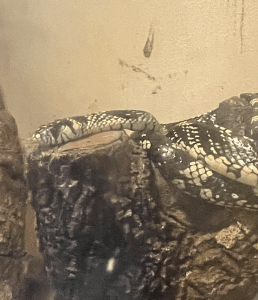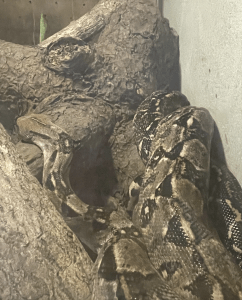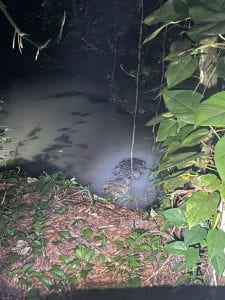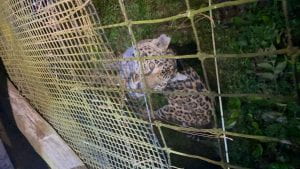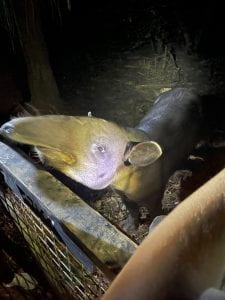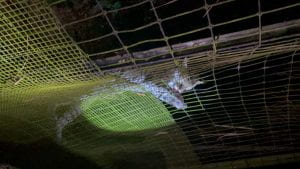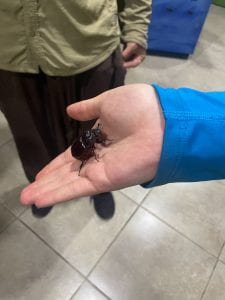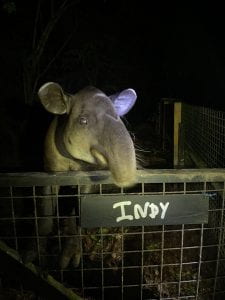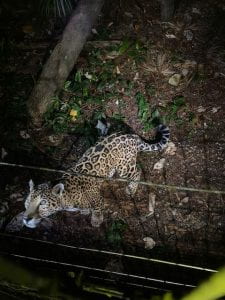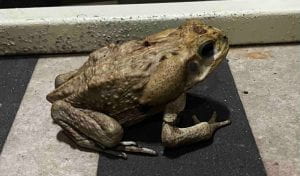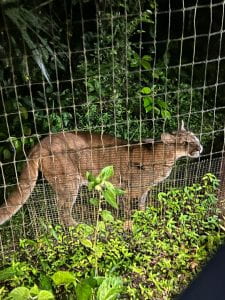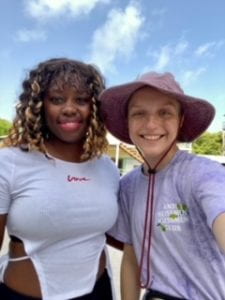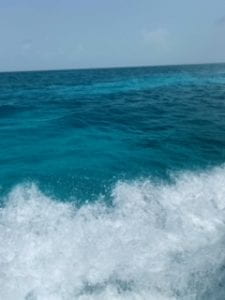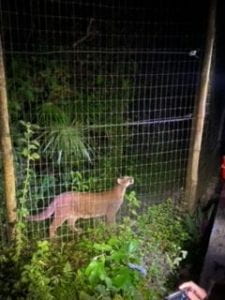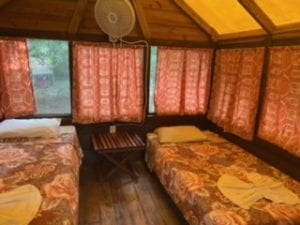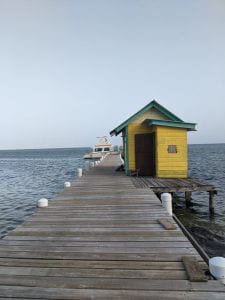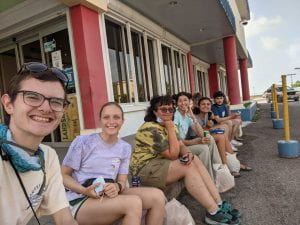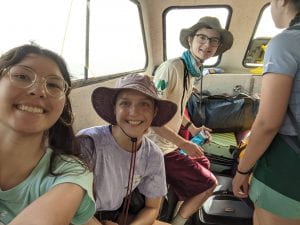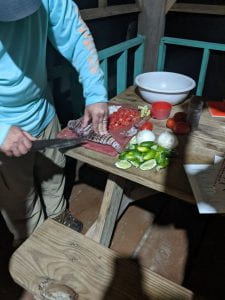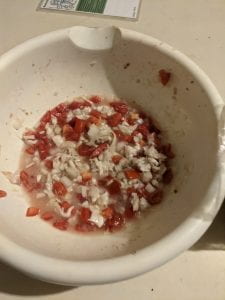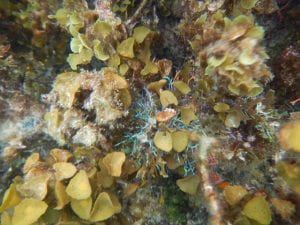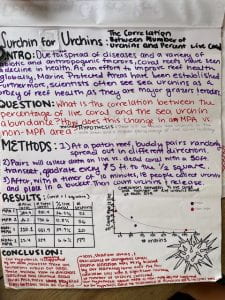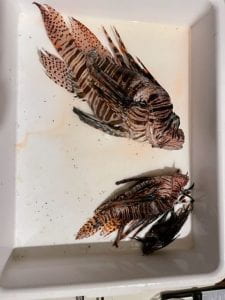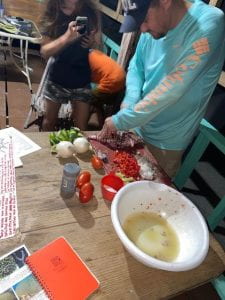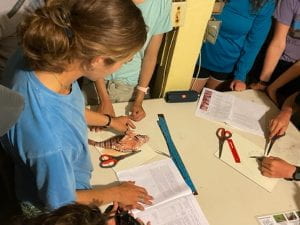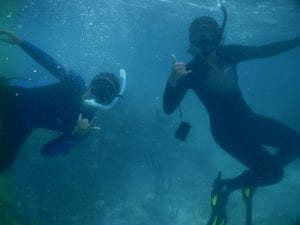Hi all, it’s Faith with Day 8 updates from the 2022 Belize trip!!!I dropped my phone in a line of lead cutter ants!!! But, a lot happened before that, so let me tell you!
This morning we woke up and had to say goodby to Middle Key, it was really sad, but we knew it was coming. The boat ride back to the the mainland was 3.5 hours, and then we waited at the Calypso restaurant for 2.5 hours trying to get lunch. What a chaotic start to traveling…
After stopping at a convenience store to restock on snacks, we arrived at the Tropical Education Center and Belize Zoo! The cabins we stay in here are so cute!!!
We quickly set our stuff down then headed up to the classroom for a presentation from Dr. about his research on Scarlett Macaws. He was super informative about the species, and explained to us how important the Chiquibil is to their breeding and how crucial the red band area is for their foraging. His research clearly has many practical applications for conservation biology and informs us about were we should allocate preservation efforts.
In between dinner and the zoo, I noticed a few reptiles at the TEC, but none of them were living. The TEC classroom has Hickatee shells (Dermatemy mawii) , and two preserved snakes on display. The two snakes are a fer-de-lance (Borthops asper) and a jumping viper (Atropoides nummifer). Additionally, a sign in the kitchen gave me hope: 2 Hickatees were seen last week in a pond. I might get to see one of the critically endangered Central American river turtles!
After dinner, our group took trucks to the Belize zoo where we got a taste of the Belizean forest’s biodiversity. We saw “nomming” ocelots, rolling jaguars, climbing ant-eaters, Mexican raccoons (coatimudnis), and a tapir! We got to feed the tapir, and as I was grabbing the carrot from our guide, I dropped my phone into a trail of leafcutter ants! I was terrified. (Thankfully Dr. Correa kindly retrieved it for me).
The Belize Zoo also provided me the opportunity to see many reptiles that I might not get to see in the wild. The first reptile we saw was the American Saltwater Crocodile (Crocodylus acutus); he was a massive 13.5 feet! This crocodile was older than me, and he was relatively calm. He laid unbothered in the water until our guide tossed a piece of chicken for him to munch; he moved very fast in pursuit.
Later on in the reptile cages, we saw a live tommygoff (Borthops asper), Boa constrictor, and a Chicken/rat snake (Spilotes pullatus). The tommygoff was curled up in a ball inside a dark log, so I couldn’t get a clear picture of it. However, the boa constrictor and chicken snake were both out on top of logs, so I have added their pictures below. This boa constrictor was actually quite small, but his patterning was the perfect example with dark and light brown spots. Likewise, the rat snake had a beautiful pattern, and the lack of red scales indicated that he was a Chicken/rat snake and not a Yellow-red rat snake.
Now that we are away from glovers, we won’t see any more echinoderms. I’m just glad I got to post a sea star for you all.
Till Tomorrow!!!
QOTD: “It’s like edgy sprite”
The internet here won’t let me upload photos, so I’ll have to add them at Las Cuevas. :'(
